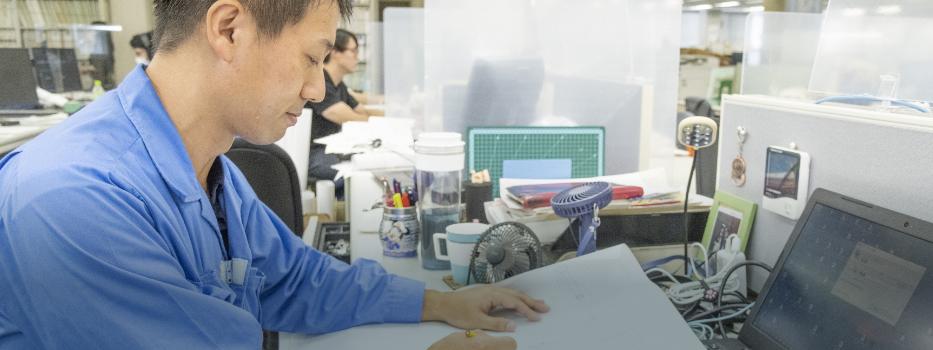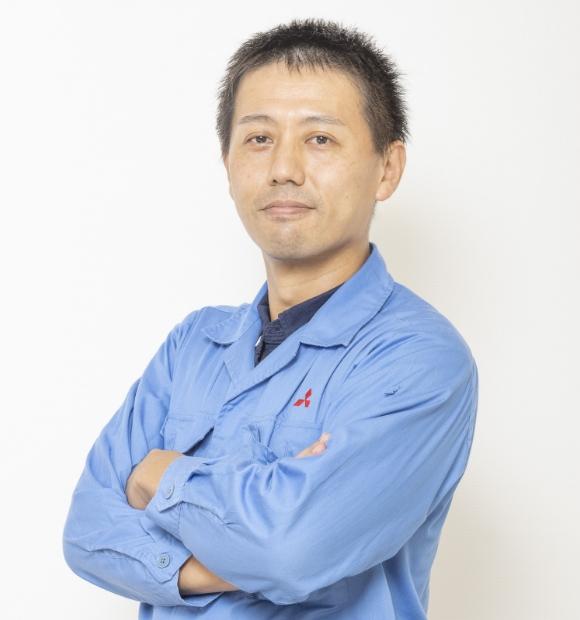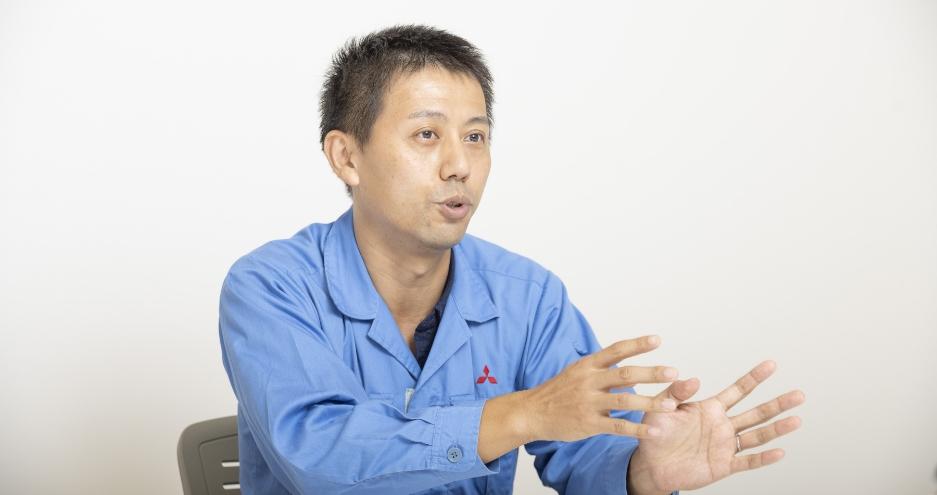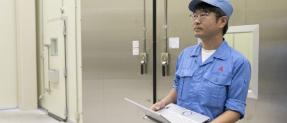DESIGNING FROM THE DEVELOPMENTAL STAGE

Shingo Ito
Multi System Air - Conditioner Designing Group
Air-Conditioner Designing & Engineering Department

-
Multi System Air - Conditioner Designing Group
Air-Conditioner Designing & Engineering Department *As of 2022Shingo Ito
-
2006
He joined the company. He was assigned to the Residential Air-Conditioner Designing Group, Transport Air-Conditioning Technology Department, Air-Conditioning & Refrigeration Systems Headquarters. He was placed in charge of full facelifts for five domestic and overseas residential air-conditioner models.2019
He worked for the Product Planning Group of the Air-Conditioner Designing & Engineering Department. He oversaw the preliminary designing of the VRF.2021
Team Manager, Multi System Air-Conditioner Designing Group of the Air-Conditioner Designing & Engineering Department
- Can you tell us the specific details of your department and current work?
-
Designing in pursuit of ultimate performance and stylishness while also focusing on productivity at plants
VRFs only require a single outdoor unit to operate multiple indoor units. Ito works for a department responsible for designing these outdoor units.
"In designing products, you first come up with a basic design that includes the components used, based on market demand. Then you verify it through analyses, and prepare a prototype to make sure there are no problems. Then you finalize the specifications upon making sure it meets performance and noise level standards, and assessing the reliability of the compressor at the heart of the air-conditioner to evaluate its comfort. In mass produced products, you have to pursue productivity in designing every single component. So, designers also have to make sure the products are easy to make."He is currently in charge of designing the hardware aimed at a full facelift of the next generation of VRFs. He began the work in April 2019, and after four whole years, is finally making preparations aimed at mass production.
"The models have undergone major structural changes, and I also prioritized stylishness. In some ways, I wasn't able to make full use of the knowledge I've accumulated to date, and frankly speaking, I encountered a lot of difficulty. But at last, it's nearly ready for mass production, so I want to devote myself fully until the end."
- What do you pay particular attention to, or feel confident about in your work?
-
Using conventional methods will result in the same products
Aiming for better manufacturing by proactively adopting new ideasIto currently works as Team Manager in charge of supervising five young members. The main part of designing is carried out by the younger members, while he acts as an advisor based on his experience.
"I try to get the young members to come up with new ideas by thinking outside the box. Using the same methods will result in the same products being made. Making new, better quality products that offer greater customer satisfaction requires you to take on challenges based on new ideas. It's important to do so through repeated trial and error.""Furthermore, we put together a DBT (design build team) for every developmental project to create better products. The DBT consists of not only designers, but also members from other departments involved in manufacturing, quality assurance, services and so on, who take part from the initial stages by being shown our blueprints. We gather opinions from various perspectives in aiming to ensure efficient development that avoids backtracking."
"We sometimes receive opinions that differ from those of designers, like the product has poor serviceability or it's difficult to manufacture. So, it's very helpful. We make adjustments, and repeat this process to create better products."
- What are your goals and outlook for the future?
-
Aiming to design air-conditioners that are both environmentally friendly and meet the needs of customers
Regulations are becoming stricter every year in the air-conditioner industry due to global environmental problems. As with the rapid trend toward EVs in the automobile industry, the switch to environmentally friendly air-conditioners has also been accelerating.
"Air-conditioners use refrigerants to control the temperature, but the problem of global warming has led to the banning of an increasing number of refrigerants. The entire industry has been striving through trial and error to find environmentally friendly refrigerants, but there are still many obstacles to their practical application."
"I think it's the duty of designers to come up with air-conditioners with features that please customers, while also being environmentally friendly."
ON-SITE DEVELOPMENT
-

-

-

-

-

-

TECHNOLOGY
- TECHNICAL REVIEW DIGEST R&D, academic papers, etc., associated with Mitsubishi Heavy Industries Thermal Systems, published in Mitsubishi Heavy Industries' Technical Review Digest. Check out the list of R&D papers from the past to the present.
- AWARDS Introduction to the awards won so far.
- DEVELOPMENTAL PROCESS AND SYSTEMIntroduction to the developmental process and system needed to realize cutting-edge thermal solutions.
- ON-SITE
DEVELOPMENT Check out articles on interviews of on-site developers.
Our advanced technologies are propped up by the convictions and passion of staff.
TECHNOLOGY
- TECHNICAL REVIEW DIGEST
- AWARDS
- DEVELOPMENTAL PROCESS AND SYSTEM
-
ON-SITE DEVELOPMENT
- ENSURING THE RELIABILITY OF QUALITY
- DESIGNING FROM THE DEVELOPMENTAL STAGE
- SOLVING AND OVERCOMING TECHNOLOGICAL ISSUES TO DEVELOP PRODUCTS SOUGHT AFTER BY CUSTOMERS
- THE IMPORTANCE OF DEVELOPMENT PROCESSES AND TESTS
- INFRASTRUCTURE TO SUPPORT DEVELOPMENT AND DESIGNING
- PRODUCT IDEAS TO MEET CUSTOMER NEEDS
